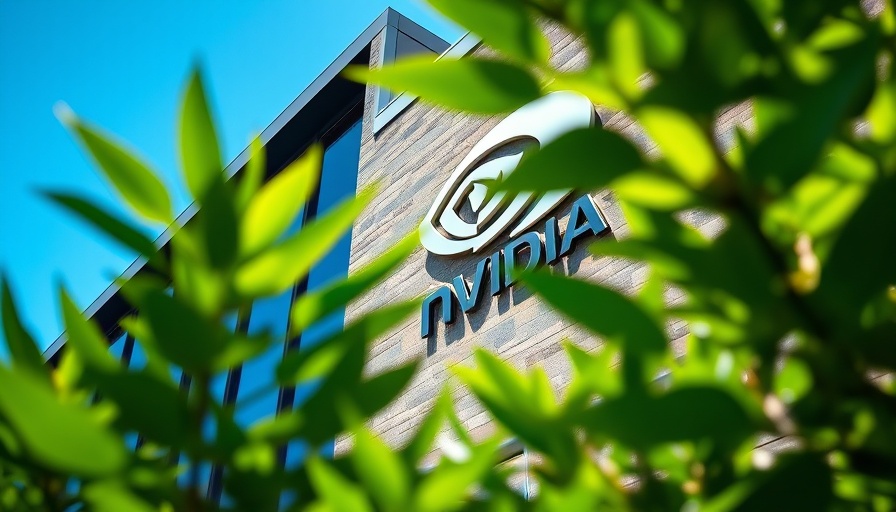
The AI Surge: What It Means For the Future of Computing
In the whirlwind of technological advancements, artificial intelligence (AI) stands out as a transformative force. One of the most exciting developments on the horizon is the Stargate project, which is set to require an astonishing 64,000 Nvidia GPUs by 2026. This staggering number not only reflects the growing demand for AI capabilities but also heralds a new era in computation that demands our attention.
Stargate: A Deep Dive into the Project's Implications
The Stargate project proposes to revolutionize how we interact with machines, enabling advanced AI systems to process vast amounts of data in real-time. The sheer scale of requiring 64,000 GPUs is unprecedented, showcasing the level of complexity that modern AI algorithms demand. This high demand underlines a critical point: as AI technologies evolve, so too do the requirements for hardware capable of supporting them.
Why So Many GPUs?
The reliance on Nvidia GPUs is no mere coincidence. Nvidia has positioned itself at the forefront of AI hardware, continually evolving its technology to meet the complex needs of deep learning and data processing. GPUs, or graphics processing units, are essential for efficiently handling massive datasets and performing parallel computations that traditional CPUs struggle with. The question leaps to mind: can current hardware keep pace with the anticipated growth?
Exploring Parallel Examples in AI Tech Growth
Looking back, we see a pattern in technology sectors where advances lead to escalating demands in hardware. For instance, the gaming industry saw similar spikes in GPU requirements over the years. As new gaming titles have leveraged graphics technology to enhance experiences, the market witnessed a surge in GPU production and sales. The AI boom appears to be following a similar trajectory, bringing tech giants like Nvidia into the spotlight.
The Economic Implications of Stargate's GPU Demand
The implications of this requirement extend beyond the tech industry. The need for 64,000 GPUs indicates potential shortages or supply constraints in the market. With Nvidia being a leading supplier, this could influence stock prices and investment strategies. Investors and tech watchers must consider whether this high demand will stabilize or spike prices further, leading to a competitive landscape.
Future Predictions: What Lies Ahead?
As we look forward, it’s essential to consider how the demand for devices like Nvidia's GPUs might shape the landscape of AI development. If trends continue, we may see more companies investing heavily in GPU technology, which could drive innovation in other sectors such as autonomous systems, advanced robotics, and even environmental monitoring systems that leverage AI.
Actionable Insights for Stakeholders and Enthusiasts
For tech stakeholders and enthusiasts, understanding the significance of such projects is crucial. Keeping abreast of the latest trends in AI and hardware advancements can prepare businesses and individuals for an increasingly competitive market. Investing in Nvidia stock, for instance, may yield significant returns due to the projected growth in AI-related hardware demands.
Exploring the Connections to Current Events
With AI making headlines globally, from discussions in policy-making on regulations to ethical considerations around privacy and data handling, the importance of advancements like Stargate resonates with broader societal topics. Cultivating a deeper understanding of AI technologies and their implications prepares individuals for future discussions and decisions that may shape our world.
As we embrace the growing capabilities of AI, staying informed and proactive about these developments will be crucial. The Stargate project serves not only as a technological benchmark but also as a signifier for the expansive future awaiting AI-driven industries. All eyes are set on Nvidia and their potential to lead the charge in this revolutionary phase.
 Add Row
Add Row  Add
Add 




 Add Row
Add Row  Add
Add 

Write A Comment